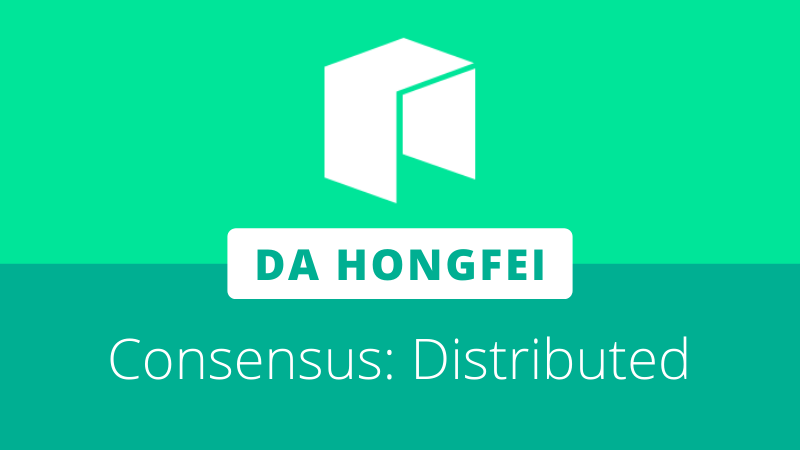
Da Hongfei participated in two of four segments that were part of an hour-long block dedicated to Neo at the Consensus: Distributed virtual event on May 11th, 2020. During his talks, Da delivered a presentation, Neo3: Empowering the Smart Economy, and participated in a Q&A session with CoinGecko’s Aimann Faiz.
During his appearance, Da outlined the areas in which he believes public blockchains need to improve to be ready for mass adoption and how Neo3 will address these requirements. He also highlighted the proposed Neo3 governance model, along with tweaks to Neo’s economic model.

Governance and economic model
The new governance model proposed by Neo would enable NEO holders to vote for a committee of 21 governing members. These committee members would be responsible for representing the community by voting on various modifiable parameters of the blockchain and other types of proposals.
Among the 21 committee members, the seven who receive the most votes will become consensus nodes, which are responsible for validating blocks on the network. Additionally, consensus nodes would have the ability to veto decisions passed by the committee, should the consensus nodes have two-thirds support to overturn the decision.
As is currently the case, NEO token holders would still receive passive GAS distributions under the proposed model – a total 10% of the GAS generated by each new block.
However, those who successfully vote for one of the 21 elected committee members would also receive an additional GAS reward for their participation in network governance – a total 85% of the GAS generated by each new block. GAS distributions would be weighted by the number of NEO tokens held.
The remaining 5% of GAS would be distributed to committee members / consensus nodes as an incentive to govern responsibly.
Neo3 and mass adoption
Speaking on blockchain as the foundation for a new economy, Da asked, “[I]s today’s blockchain technology ready to become the empowering infrastructure for the digital economy? To be honest, my answer is, at least, not yet.”
Da outlined various ways in which today’s public blockchains are currently unequipped to support mass adoption. One area of critique was that of “adaptability,” which describes a disconnect between the design philosophy of some blockchains and real world business requirements.
Da cited issues such as centralization versus decentralization and Proof of Work versus Proof of Stake as examples where debates have become focused on absolutes or binary choice, rather than practical applications.
“Decisions shouldn’t be based on ideology or preference, but instead you should make these choices based on different scenarios. [Such as] what kind of business or what kind applications the blockchain is intended to be used for. So you should be adaptable.”
Neo’s approach to this issue is to adopt a philosophy that evaluates design choices on a multivariate spectrum. From this perspective, Neo can decide on a sliding scale what level decentralization/centralization is most appropriate, or how much on-chain/off-chain governance would be most efficient – an approach that has guided the design of Neo3.
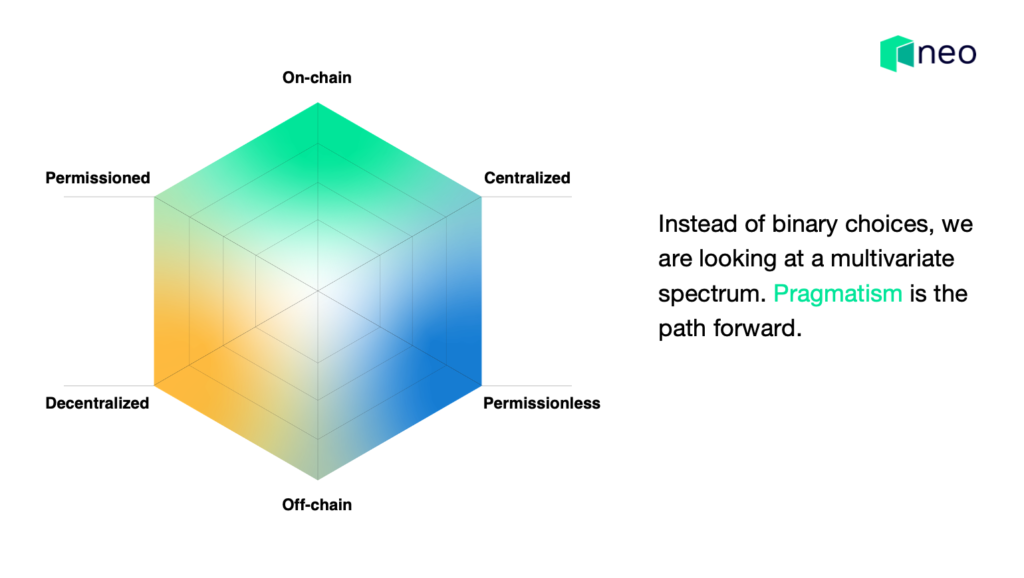
Another limitation currently holding back mass adoption, according to Da, is interoperability. If blockchain is to be the underlying network infrastructure of a global free market, blockchains must not be independent information silos. Instead, Da suggested that we need an internet of blockchains where assets can flow freely among one another and call smart contracts between chains.
Neo is working on this requirement, with an interoperability protocol in development that is currently supporting cross-chain asset swaps and smart contract calls in TestNet environments between Neo and Bitcoin, Ethereum, and Ontology.
According to Da, Neo’s interoperability protocol is “the most intriguing feature of [the] Neo3 blockchain” citing use cases such as the migration from Neo2 to Neo3, the evolution of blockchains, or the splitting of blockchains as potential use cases.
The final key requirement on the road to mass adoption was noted as the tokenization of assets, which includes non-fungible tokens (collectibles, art, event tickets, etc.), security tokens (securities, stocks, bonds, REITs, etc.), fiat currencies (RMB, USD, EUR, etc.), and physical assets (cars, phones, TVs, etc.).
Da highlighted Switcheo Exchange, the Liquefy STO service provider, and the NeoLine wallet as projects in the Neo ecosystem that are currently working to support tokenized assets in various forms.
Da concluded this segment by saying, “I believe with Neo3 we have the adaptability, we have the capacity of tokenization, and we also have an open mind for interoperability. I believe Neo3 will be at least be one of the winners in the competition with public blockchains.”
Neo3 migration
“The upgrade from Neo2 to Neo3 will be the most important upgrade in Neo’s history,” according to Da, who gave an overview of some of the migration logistics and support that will be available to the ecosystem.
Once Neo3 launches, Da said that Neo intends to maintain the Neo2 blockchain concurrently for an undisclosed period. During this time, projects and individuals will have the opportunity to freely transfer assets and smart contracts from Neo2 to Neo3.
Neo Global Development (NGD) also intends to coordinate with ecosystem partners and various exchanges on migrating assets. Though a definite date was not provided, Da intimated these conversations will begin after the launch of Neo3.
In the near term future, NGD intends to launch the Early Adopter Project, which will offer support and assistance to developers and projects that are willing to develop on the early versions of Neo3. Interested parties were advised to “keep tuned.”
Digital currencies impact on blockchains
During the Q&A session with Faiz, Da was asked about his thoughts on the digitization of the Chinese Yuan and its impact on public blockchains like Neo. In the short-term, Da doesn’t believe there will be a direct effect on any blockchain. However, he said:
It will open the mind of people that we can have a digital version of money which can be programmed, can be managed by code. It’s enlightenment for the completely digital economy that will ultimately benefit the blockchain industry. We will see a migration from physical goods and physical paper, moving into the digital realm. All this movement will be utilizing blockchain technology.
Ultimately, digitizing the Chinese Yuan fits within Neo’s vision of the Smart Economy and the digitization of assets. Da concluded, “I would say, in the long-term, it will definitely benefit Neo.”
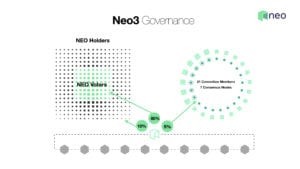
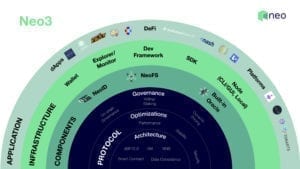





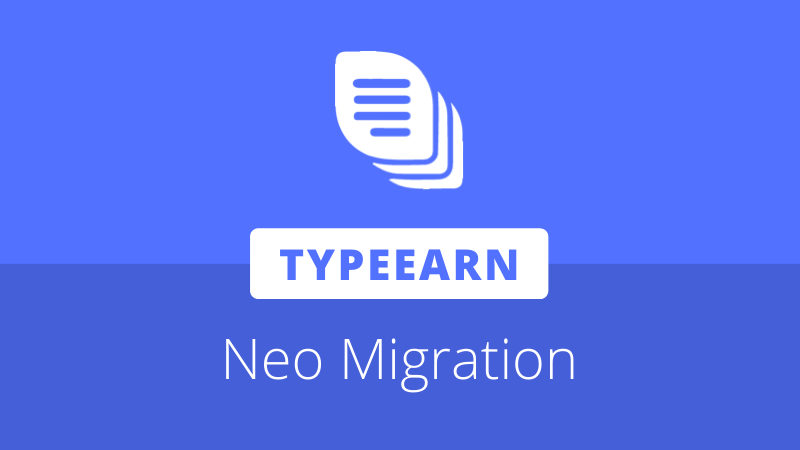

About The Author: Dylan Grabowski
Dylan is a reformed urban planner with a passion for covering the Neo ecosystem. His objective as a writer for Neo News Today is to report news in an objective, fact-based, non-sensational manner. When not behind a computer screen, he can be found in the mountains rock climbing. Find Dylan on Twitter (@GrabowskiDylan).
More posts by Dylan Grabowski